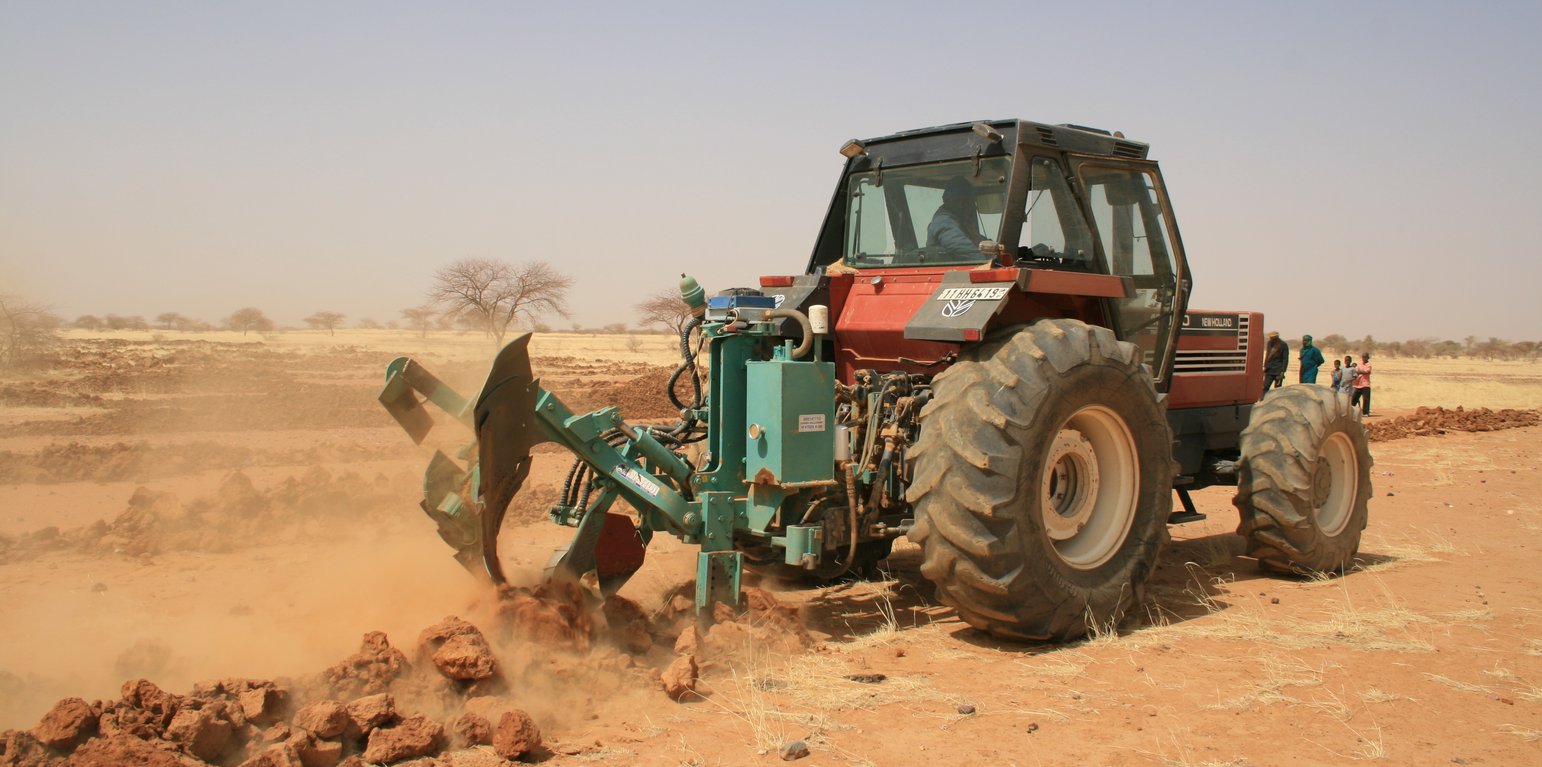



The Technology mechanizes the traditional technique of zai and semi circular bunds for water harvesting using a modified plow named Delfino3s pulled by a 180hp tractor. A normal plow on flat land excavates a symmetrical, continuous furrow, and earth piles up equally on both sides of the furrow. The Delfino3s plow has a single reversible plowshare that creates an angled furrow and piles up the excavated soil in half moon shaped ridges only on the downhill side. The plowing must be done along the contour to collect and slows down runoff water as it flows downhill. The plow’s blade moves in and out of the soil creating micro basins about 5 meters long, 50 cm deep, 50 cm wide and spaced 2-3 m. The ripper placed before the plow cracks up the soil to a depth of 70 cm facilitating the infiltration of water into the soil profile and the growth of deep roots. After plowing, the local population sows seeds of plants of indigenous species. They are sown along the ridges of the basins and in the furrow of the ripper. While for most species seeds are collected by the local population, for species rarely present in the region, seeds are purchased from tree nurseries. Sowing the manure of goat containing seeds has also been very successful with about 95% of all micro basin having at least one tree growing. The intervention on a big scale, the effects of water infiltration in depth, erosion reduction and vegetation growth, boost a long lasting rehabilitation process. Each day the Delfino plow can plow up to 20 ha, digging 6.000-7.000 micro basins. The speed, the capability to plow hard, abbandoned land, the effectiveness of the Delfino3s plow are its major advantages for the ecosystem rehabilitation process but require a big commitment. To make the best out of it, a great motivation and organizational work is necessary to: find great availability of land; train accuratelly the technicians; have well-rooted Subjects in the region. The technological aspect is just part of the recovery process, an important work with the Communities is required upstream and downstream. Communities are involved in the management process – in identifying the areas to be restored, clarifying the land uses of the affected areas, planning and implementing e.g. gathering and keeping seeds of local ecotypes, sowing, in the management of plantations and in the monitoring and evaluation of the results. Rules for SLM are adopted and respected by all. The Technology is applied in a degraded agro-sylvo-pastoral area of the Sahel Region, in the north east of Burkina Faso with 200-500 mm of annual rainfall. The soil is sandy-loam, strongly degraded with surface crust. The population is mainly composed of semi-nomadic herders. At the beginning of the project, the NGO Reach Italia was promoting schooling; they soon realized that during the dry season most kids left school and that to avoid it they should face food security and pasture improvement. So they started applying the Vallerani System and developped the participatory approach. The vegetation growth reduces the need for fodder search and long-range transhumance which also allows children to go to school regularly.The ecosystem rehabilitation effect of the technology help the communities to become more concious and resilient to the effects of climate change and prepared to cope with the socio-economic-environmental changes they are faced with.
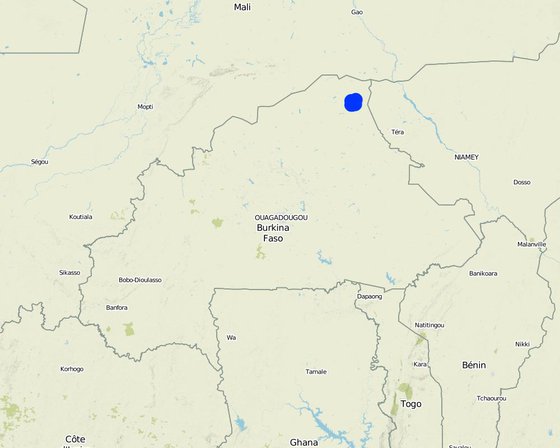
الموقع: Sahel Region, بوركينا فاسو
عدد مواقع تنفيذ التقنيةالتي تم تحليلها: 10 - 100 موقع
انتشار التقنية: منتشرة بالتساوي على مساحة (25.6 km²)
في منطقة محمية بشكل دائم؟:
تاريخ التنفيذ: منذ 10-50 سنة
نوع التقديم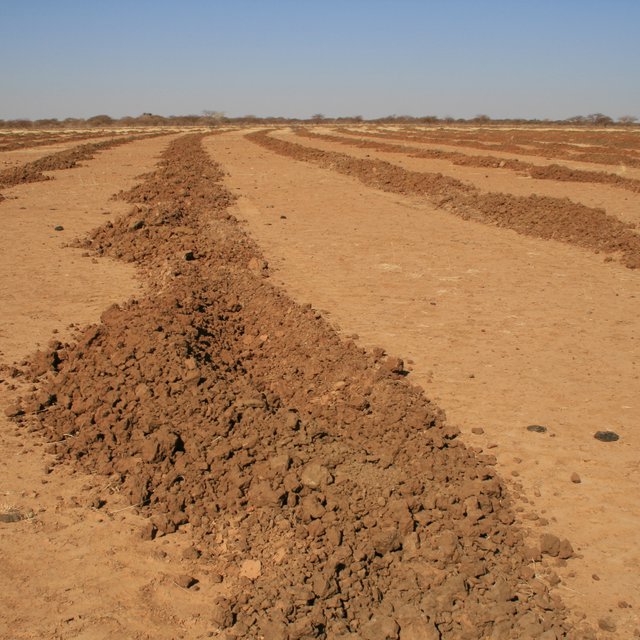
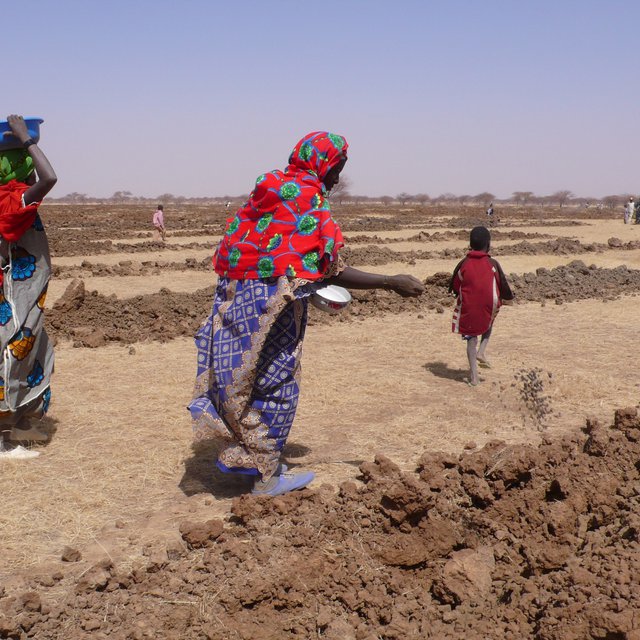


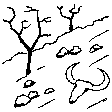










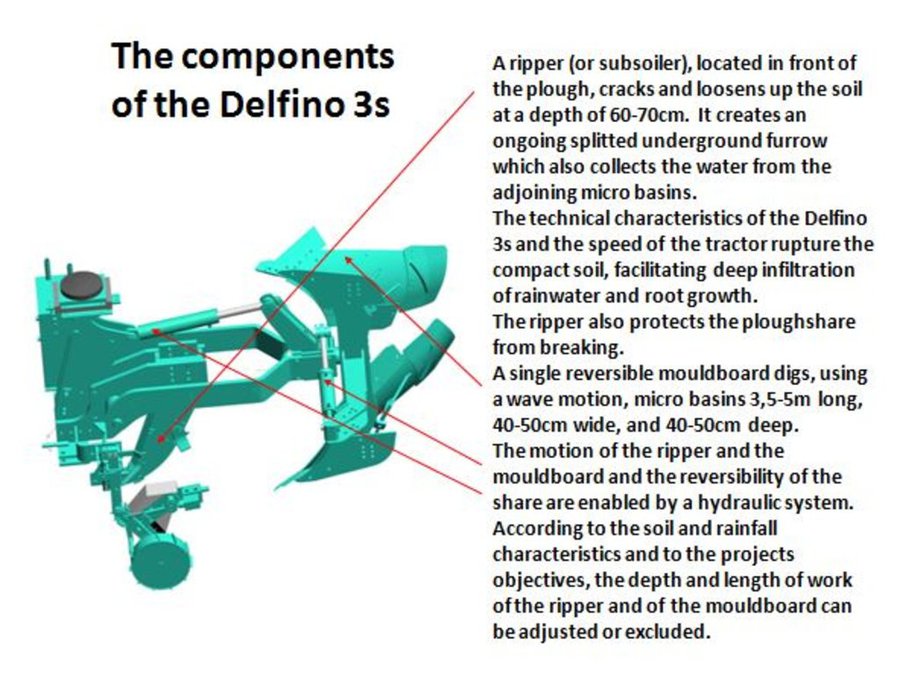
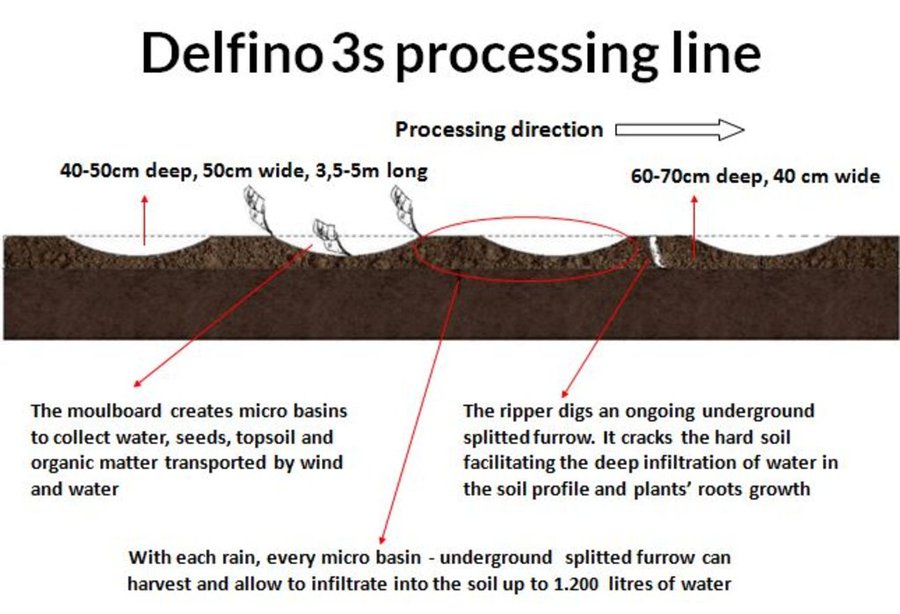
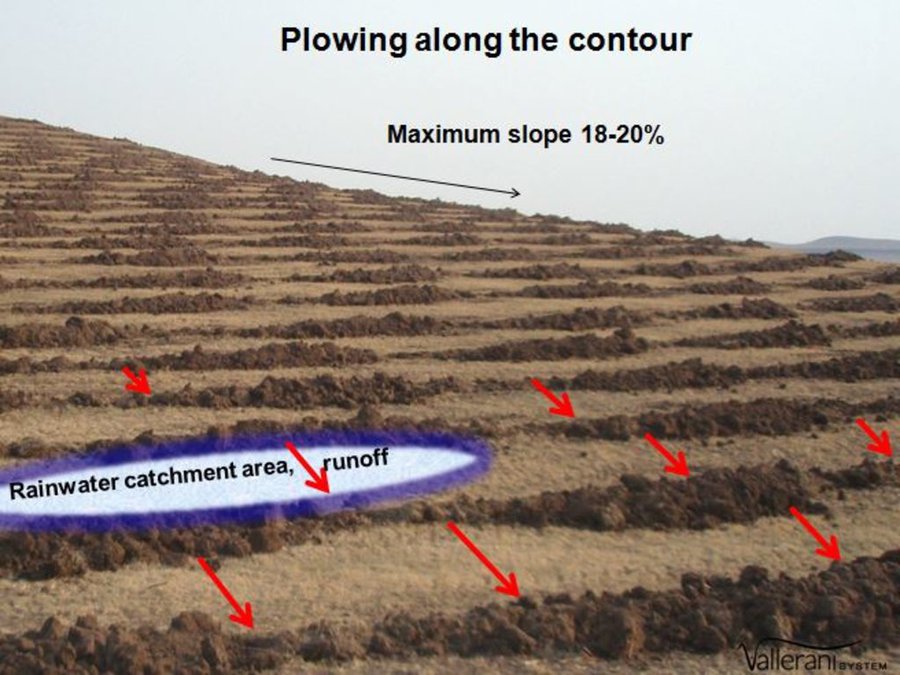
| تحديد المدخلات | الوحدة | الكمية | التكاليف لكل وحدة (دولار أمريكي USD) | إجمالي التكاليف لكل مدخل (دولار أمريكي USD) | % من التكاليف التي يتحملها مستخدمو الأراضي |
| العمالة | |||||
| معدات | |||||
الكمية قبل الإدارة المستدامة للأراضي: None
الكمية بعد الإدارة المستدامة للأراضي: 2-4 times
Crop production and biomass augmented 2-4 times compared with traditional cultural techniques.
الكمية قبل الإدارة المستدامة للأراضي: 90kg/MS/ha
الكمية بعد الإدارة المستدامة للأراضي: 1250kg/MS/ha
Grass fodder production increased by a factor of 5–30 compared with unmanaged land. The production of herbaceous biomass varied from 420 kg to 2.090 kg (dry matter) per ha; thus, on average, 1.250 kg of herbaceous biomass (dry matter) per ha developed on sites where the Vallerani system was deployed, compared with an average of 90 kg (dry matter) per ha in control plots. Vegetation is mainly distributed inside and around the micro basins.
الكمية قبل الإدارة المستدامة للأراضي: 12 floral species
الكمية بعد الإدارة المستدامة للأراضي: 44 floral species
The application of the Technology boosts a regenaration process increasing year by year. Compared to the surrounding control rangelands, fodder quality and biodiversity increased with a high proportion of grassland species of good forage value, such as Panicum laetum and Schonefeldia gracilis, and the return of legume species such as Alysicarpus ovalifolius and Zornia glochidiata also testify the improvement of the quality of the reconstituted pastures.
The increase of fodder quantity and quality represents a surplus of 22–106 grazing days per tropical cattle unit per hectare. This extra fodder supply reduces the need to make long-range transhumance or cut shrubs to meet livestock needs for fodder, even in years where pasture is low. Livestock is fed with more and better quality fodder so its productivity and market price increase.
الكمية قبل الإدارة المستدامة للأراضي: 20 trees/ha of 6 species
الكمية بعد الإدارة المستدامة للأراضي: 700 trees/ha of 14 species
Significant improvement in forest cover (700 live trees and shrubbs per ha, on average) and biodiversity: trees are capable of spontaneous growth even with open access to grazing and in years of high water stress.
Berries, gum arabica, resins, fruits.
The increased fodder quantity, quality and biodiversity, the deep root system of the sown plants, increase resilience of the ecosystem and reduce the risk of production failure. The increased biodiversity, soil moisture and fertility increase the resilience of plants to attacks by pests, deseases and drought. Even in the case of severe drought, there are some plants that can be used as "emergency food" by humans and animals.
The implementation of the Technology gives the opportunity to diversify the production. Next to animal breeding, agriculture has intensified and in some villages the production of handicrafts, food processing, hunting and tourism activities are developping. Berries, gum arabica, resins, fruits enrich the family diet or can be sold at markets. Wild animals, insects, reptiles and birds have returned after decades and greatelly increased.
الكمية قبل الإدارة المستدامة للأراضي: None
الكمية بعد الإدارة المستدامة للأراضي: 25.600ha
By the end of 2017 about 25.600 hectares of severelly degraded, abbandoned land has been rehabilitated.
Local people attest that the rehabilitation of large areas of bare soil augmented the local rain amount and the water level in the wells.
The rain collected in the micro basins is available for livestock during the rainy season. The augmented rainfall also increases water availability in boulies (ponds).
No water is needed for the Technology except for rain.
The implementation cost of the technology is not entirelly sustainable by Communities. donors and founders sustain the project. Large-scale application reduces the cost per hectare and increases the impact of actions in reversing the degradation–desertification trend. The cost of each plowed hectare.
Fodder increase in quality and quantity, improve animal health and productivity as well as their market price.
The Technology increases income for herders and their families also thanks to diversification. More land is also used for agriculture. Selling or transformation of other products such as berries, fruits, gums, resins; hunting; new job opportunities in disadvantaged areas such as tractor drivers, social promoters, seed collectors...The community raises awareness and a potential for small business activities occurs, mainly among women.
Disadvantaged groups such as women start new economic activities such as mat production and sale at markets, medical plants and food production. They diversify their income and improve their status in the community.
الكمية قبل الإدارة المستدامة للأراضي: 5 micro basins/day
الكمية بعد الإدارة المستدامة للأراضي: 6.000 micro basins/day
Each man can dig 5 micro basins per day doing a heavy work. The plow can dig 6.000-7.000 micro basins per day. As most rangelands, the area of the project has a low human density (29 inhabitants/km2) so people are responsible for seed collection and storage, sowing, the livestock management during the first growing phase, monitoring activities, a.s.o.
Increased and improved fodder availability reduces the need for long-range tranhumance and seasonal or definitive migration to areas with more work opportunities (e.g. mines), cities or other countries.
Food security improves with increased and diversified productivity and income. The increased fodder and crop quantity, quality and biodiversity, the deep root system and soil fertility, increase the resilience of the whole ecosystem. Even in the case of severe drought, there are some plants that can be used as "emergency food" by humans and animals.
Improved health especially due to better nutrition also for disadvantaged groups such as children and old people: bigger amounts, diversification, milk, vegetables. The reduction of dust storms also improves the health situation.
Awareness rising and discussion of the theme are essential. Due to the great productivity of former degraded and often abandoned land, land use rules and water rights are clearly discussed and defined at the beginning of the project. Rules for SLM are adopted and respected by all; for example, it is forbidden to install camps in or near restored areas, to cut trees, and to mow for commercial purposes.
Shadow, green areas near the villages increase recreational opportunities.
It is essential to involve and give responsibility to local people in every step of the process. Comities and groups such as the women or seniors groups gain relevance and become essential for the sustainability of the project.
Collaborations with national institutions such as forestry direction, ministery of environnement and agricolture, research institutes, etc
All communities are involved in the management process – identifying the areas and the use of the sites to be restored, planning, and implementing (e.g. gathering and keeping seeds of local ecotypes, manure and sowing). Local villages are involved in the care and defence of new plantations and in the monitoring and evaluation of the results of vegetation growth. Ultimatelly they become responsable for the sustainable management of the whole area.
If land use and water rights are clearly defined, the increased availability of fodder reduces conflicts with neighbours and farmers.
People have more confidence in the future, dignity and hope. The Community cohesion and identity is strenghtened and the community becomes more resilient to conflicts and disasters.
الكمية قبل الإدارة المستدامة للأراضي: None
الكمية بعد الإدارة المستدامة للأراضي: 360.000l/ha
With each rain, each micro basin can collect up to 1.200l of water. Each hectare collects an average of 360.000 liter of rain, runoff included. Collected in the micro basin, the water has enough time to infiltrate in the soil profile and eventually in the water table. Local people assert that after the implementation of the Technology, the water level in the wells has raised.
The Technology allows to harvest 100% of the rain falling in the micro basin and on the ripped furrow as well as up to 90% of the rain falling between the tilled lines. The bare soil between the tilled lines is essential as catchment area, to recieve rainfall and process runoff downstream. The micro basins collect up to 95% of rainfall.
الكمية قبل الإدارة المستدامة للأراضي: 5-15%
الكمية بعد الإدارة المستدامة للأراضي: 90%
Plowing is done along the contour. This is essential to collect the runoff that flows between the tilled lines (catchment area). The distance between the lines can be between 4m and 12m depending from: slope, rain characteristics (quantity, intensity), soil type, surface roughness (runoff coheficient), the purpose of the project (type of plants desired). The technology allows to collect up to 90% of the runoff.
Local people assert that after the implementation of the technology, the water level in the wells has raised.
The rain collected in the micro basins infiltrates in the soil profile being accessible for seeds and roots without evaporating. After the first rains, the micro basins are quickly covered with high grasses that contribute to reduce evaporation.
Improved soil hydrodynamic properties: the relative size of capillaries by different soil levels increased and the soil water-retaining capability improved.
Reduced soil loss through runoff reduction and wind erosion.
الكمية قبل الإدارة المستدامة للأراضي: 423
الكمية بعد الإدارة المستدامة للأراضي: 70
At different depth soil compactness reduces from 6 (0 to 20cm) to 1.3 times (40 to 60cm)
Vegetation cover increase 5 to 30 times. Vegetation grows mainly inside and around the micro basins.
الكمية قبل الإدارة المستدامة للأراضي: 70 to 110kg/MS/ha
الكمية بعد الإدارة المستدامة للأراضي: 420 to 2090 kg/MS/ha
The biomass production increases 5 to 30 times compared to the nearby unplowed soil. On implemented sites, biomass varies from 420 to 2090 kg / DM / ha, on average between 1000 and 1200 kg / ha against 70 to 110kg / DM / ha on control plots.
الكمية قبل الإدارة المستدامة للأراضي: 14 herbaceous, 6 woody species/ha
الكمية بعد الإدارة المستدامة للأراضي: 44 herbaceous, 14 woody species/ha
Floral diversity increases from 14 to 44 species. With a high proportion of graminaceous species of good forage value and the return of more leguminous species. Concerning the diversity of woody plants the results show an average per hectare of 14 species on implemented sites and an average of 6 species on control plots.
A great increase of animal biodiversity: insects, birds, reptiles and mammals (such as squirrel, jackals, gazelle...) are observed in the implemented sites.
The increased vegetal and animal biodiversity, deep root system, soil fertility and water availability, increase the health and resilience capacity of the whole ecosystem.
Through water harvesting the rain is retained in the precipitation area and flood risk decreases. If flood occurs in the plowed area before the vegetation is well established, the micro basins can be washed out.
Increased biodiversity, vegetation cover and soil fertility, deep root system and water storage in the soil profile, increase the resilience to drought of the whole ecosystem. During the project, in years of extreme drought, plants have reduced their growth but most of them survived, were used to feed animals and started growing again in the following rainy season.
Minimal production of carbon dioxide compared with the potential gain.
The implementing area remains open to lifestock (regulated pasture) to reduce the high production of grass that could favor the spread of a fire, herders also monitor the territory. There is a high level of community involvement and a growing ecological awareness.
The great number of growing trees reduce the wind speed.
Local people attest that the Technology locally increased the amount of rain and reduced dust storms in number and intensity.
Local people tell that the rehabilitation of large areas of bare soil augmented the local rain amount and the water level in the wells.
Wind intensity and dust storms reduction thanks to soil coverage and wind brake effect by trees and shrubs.